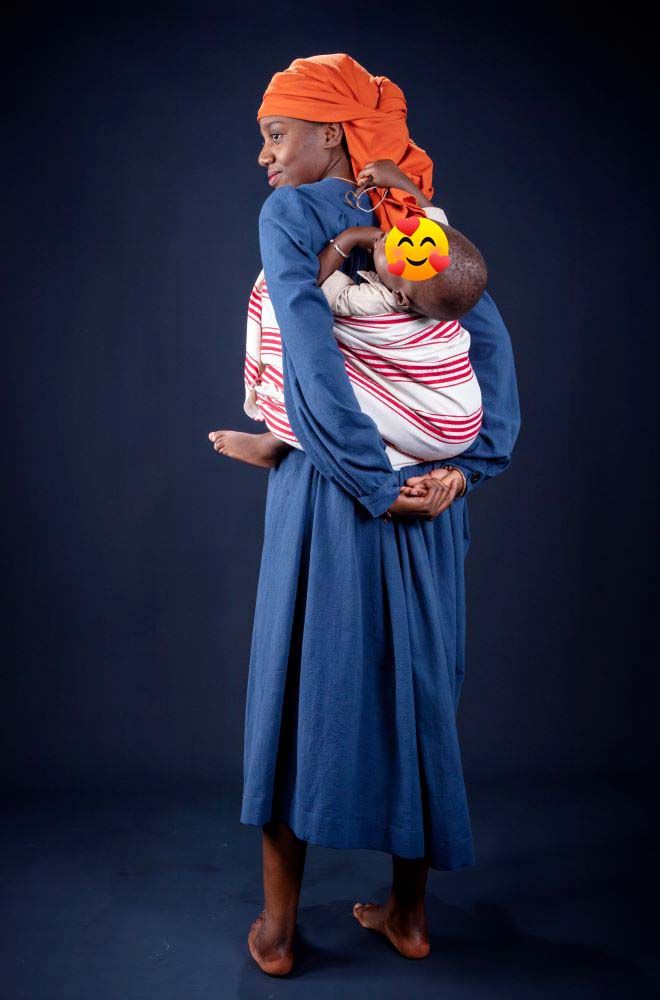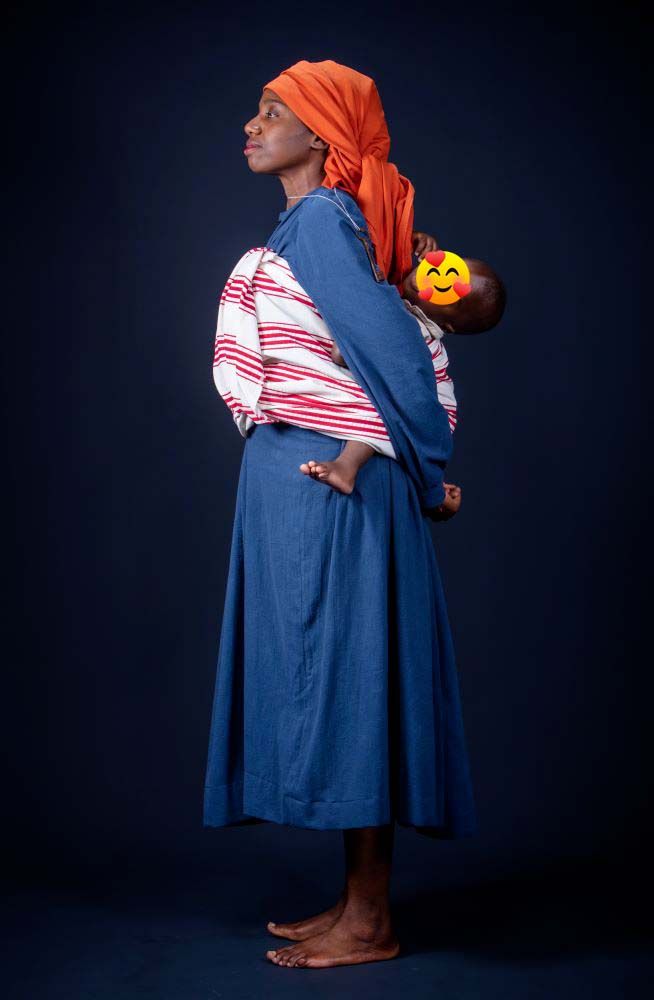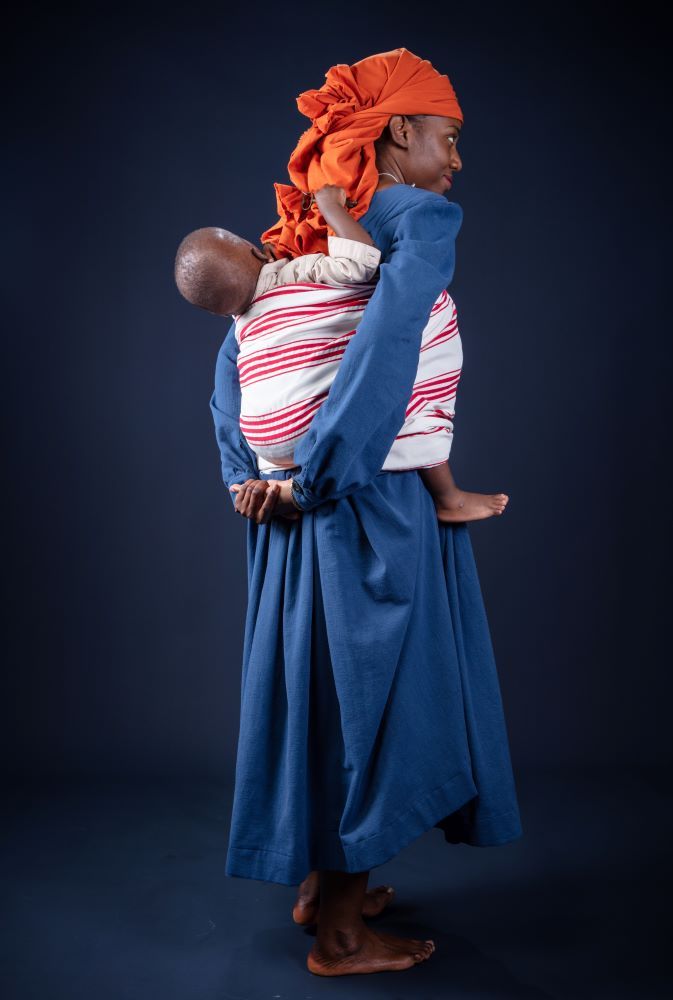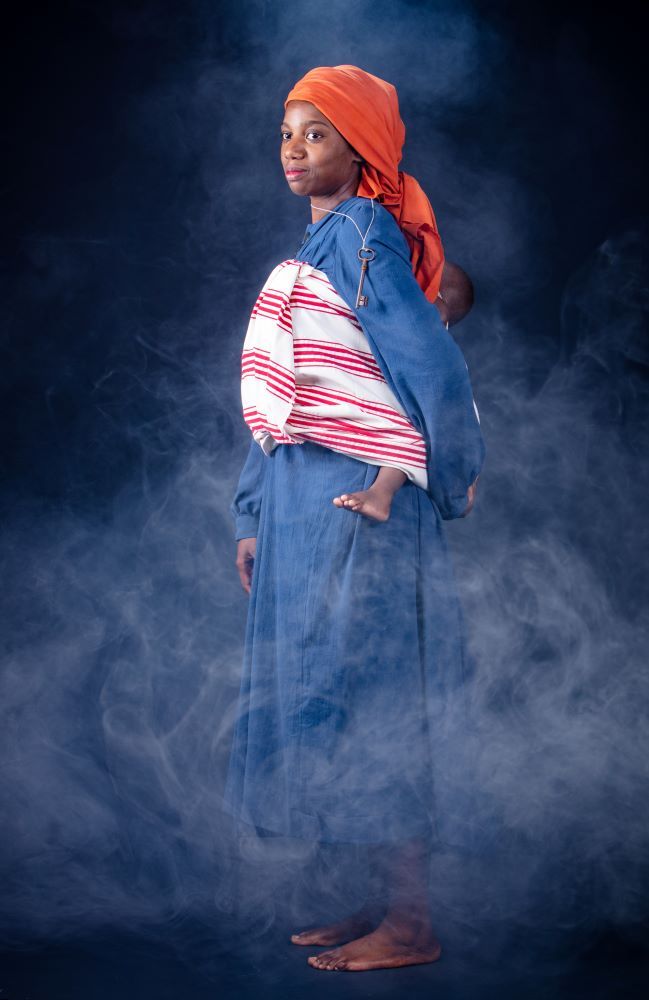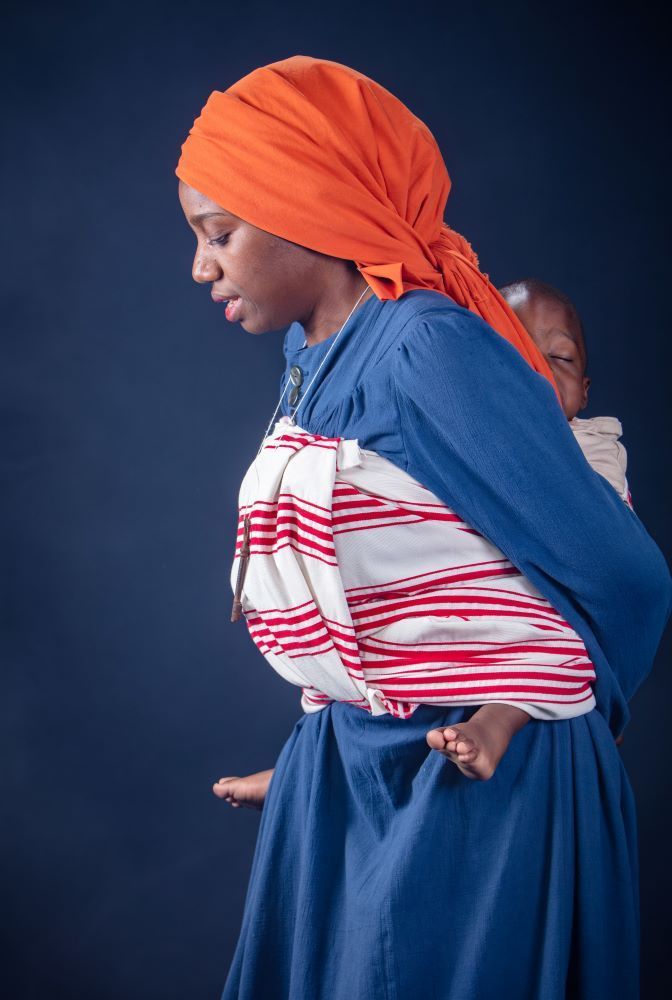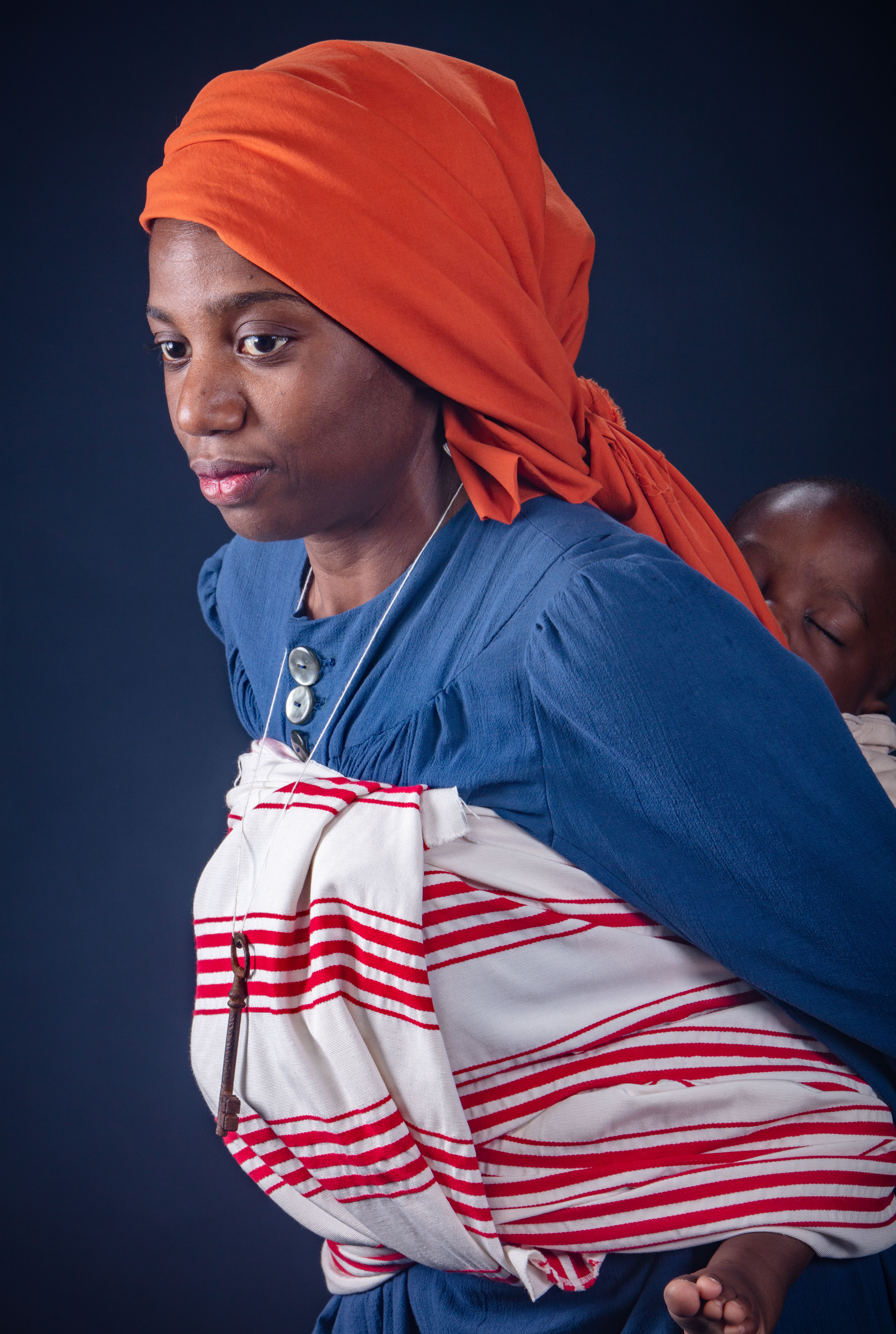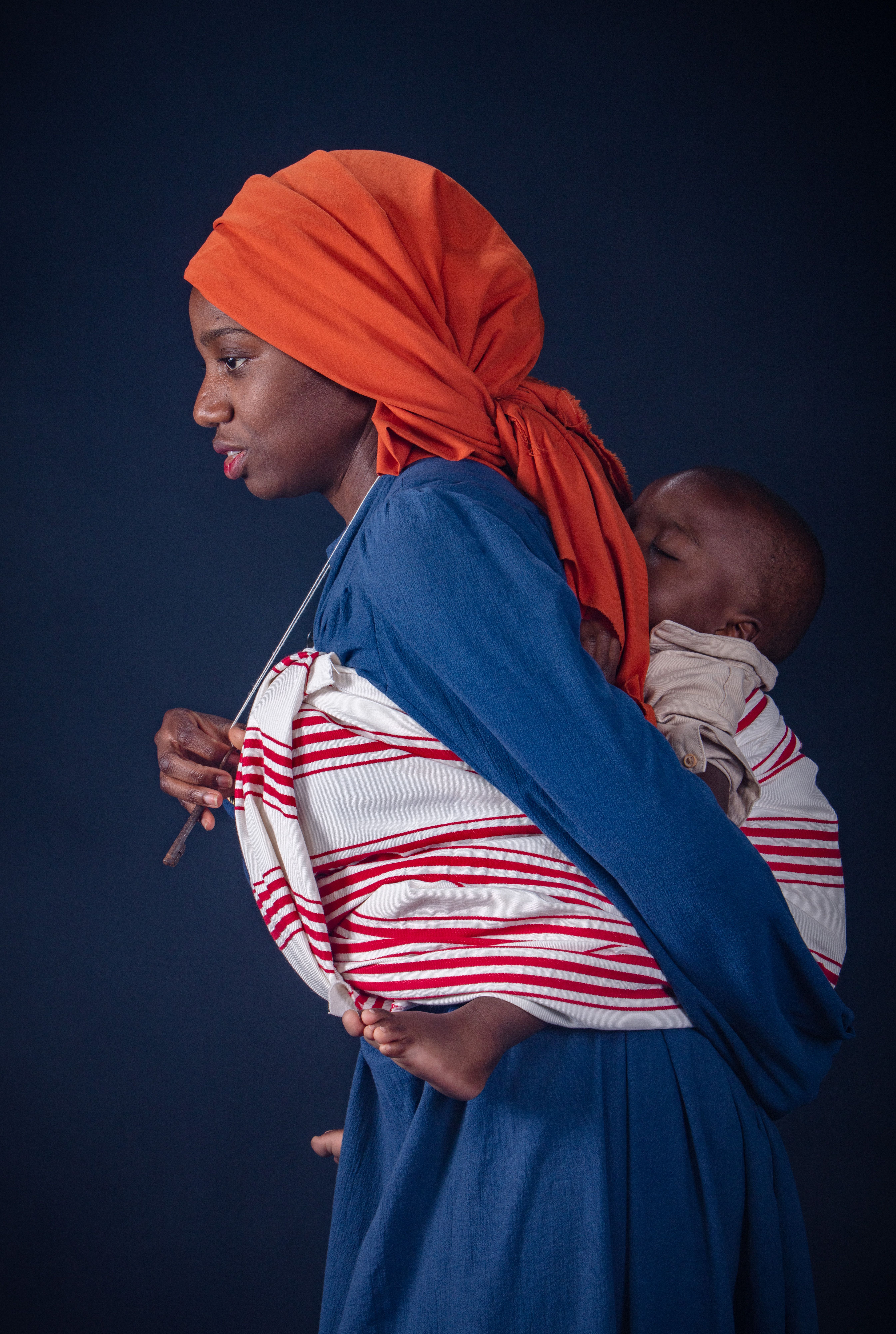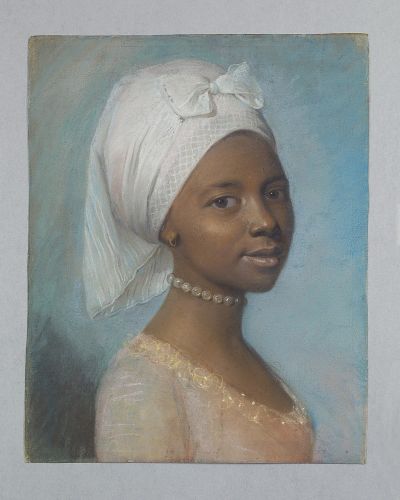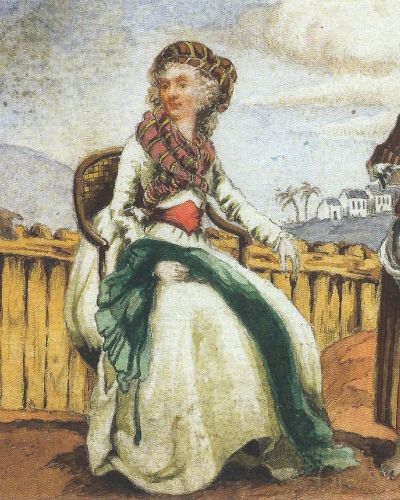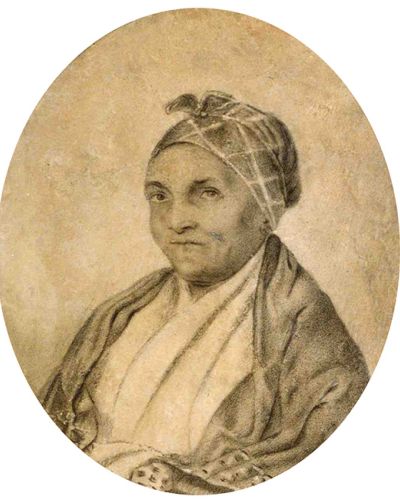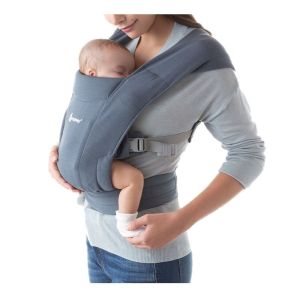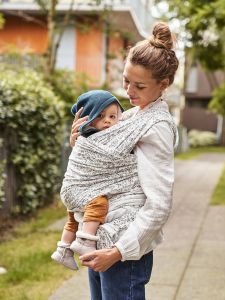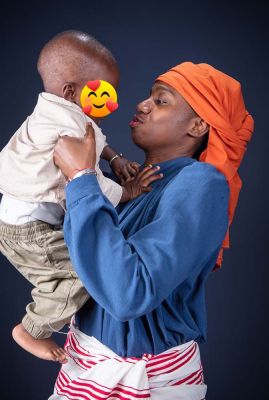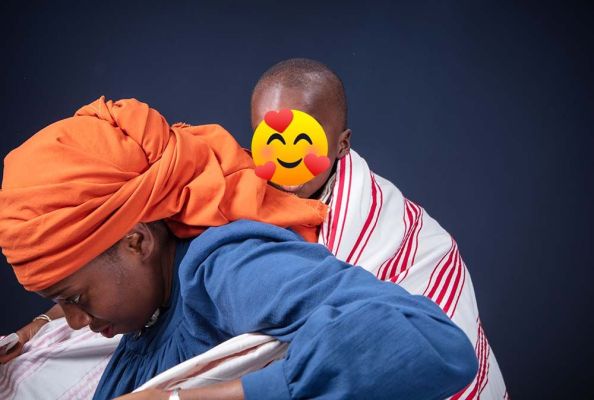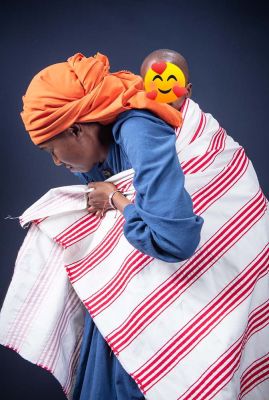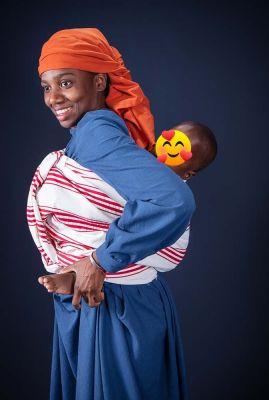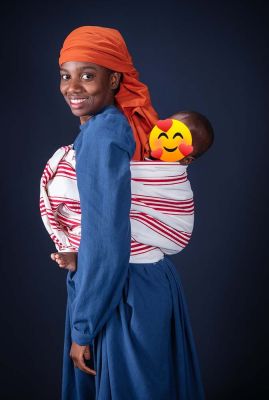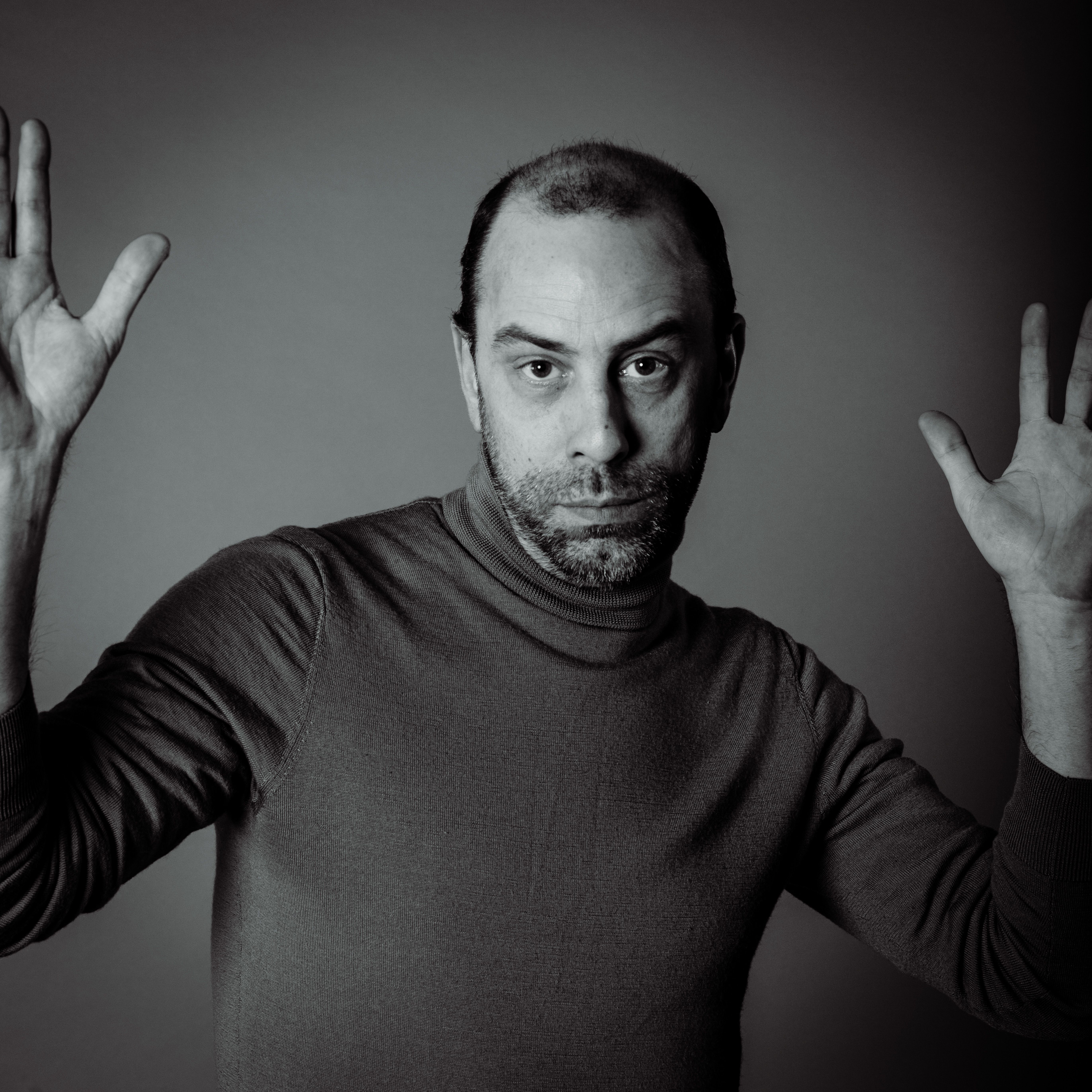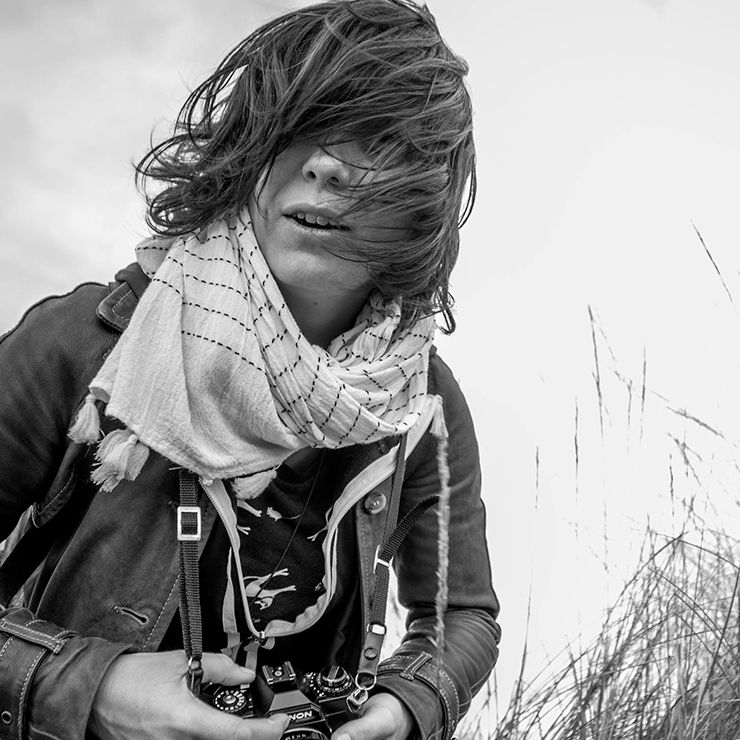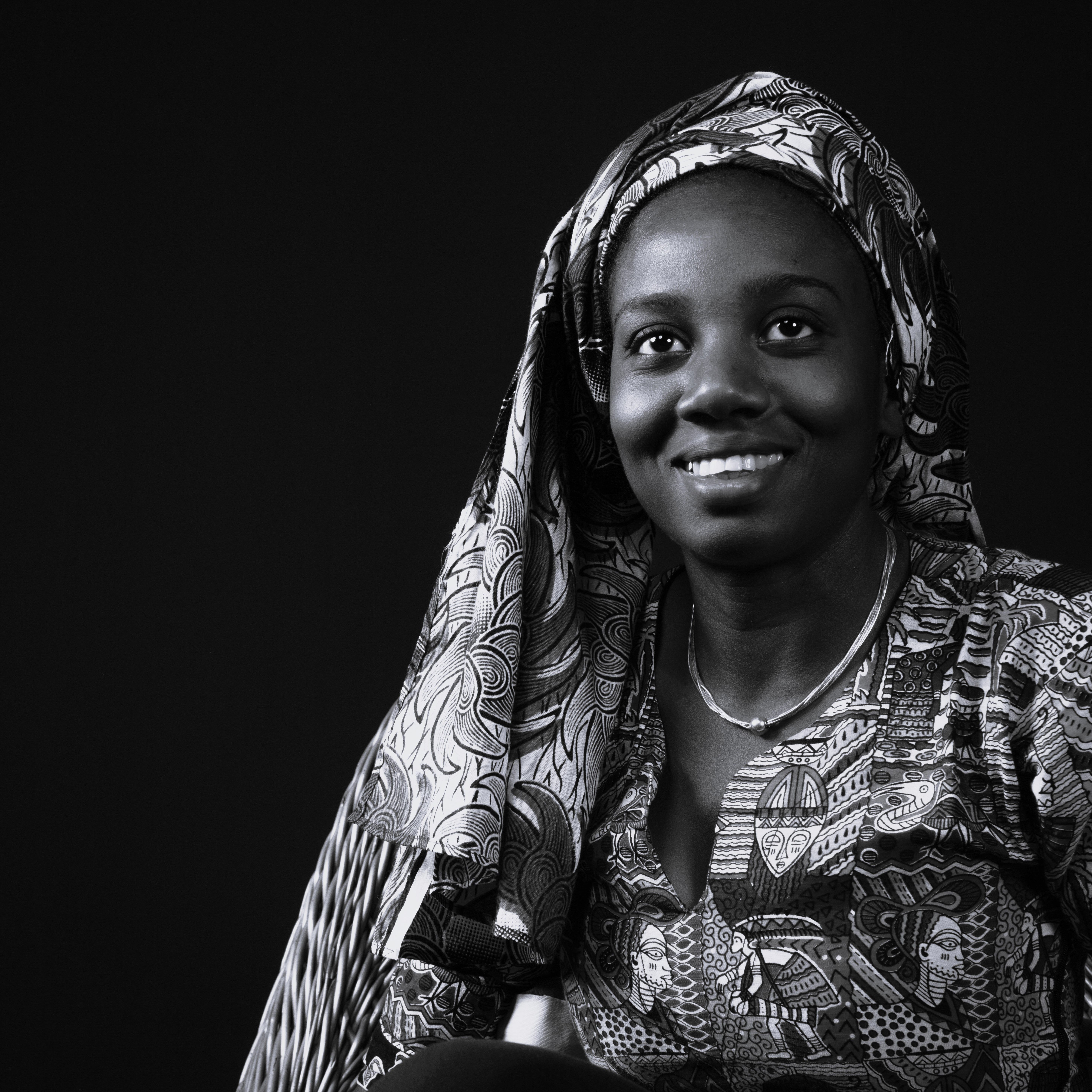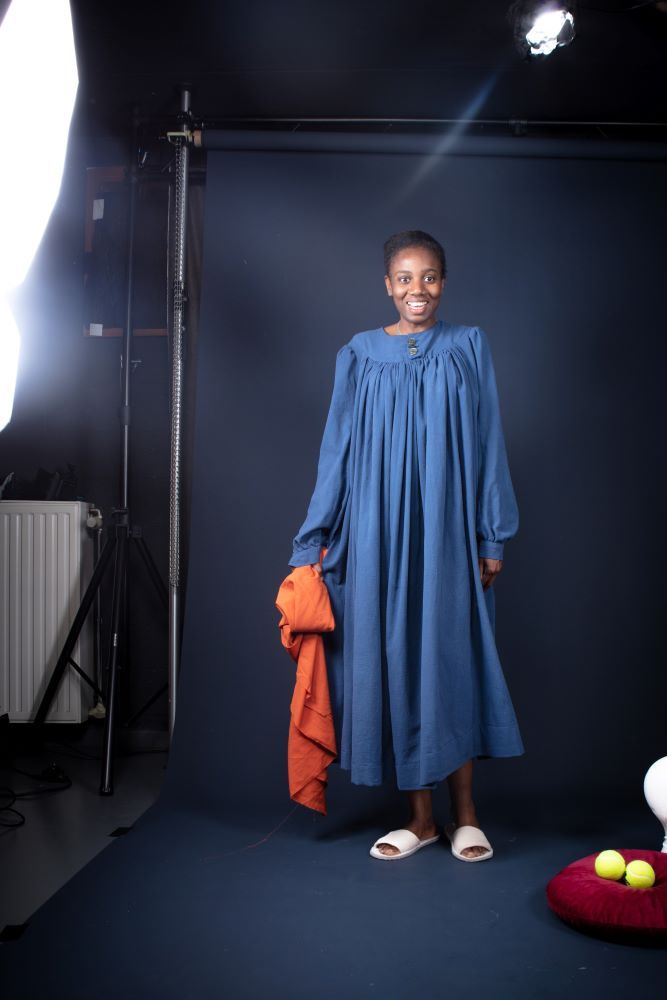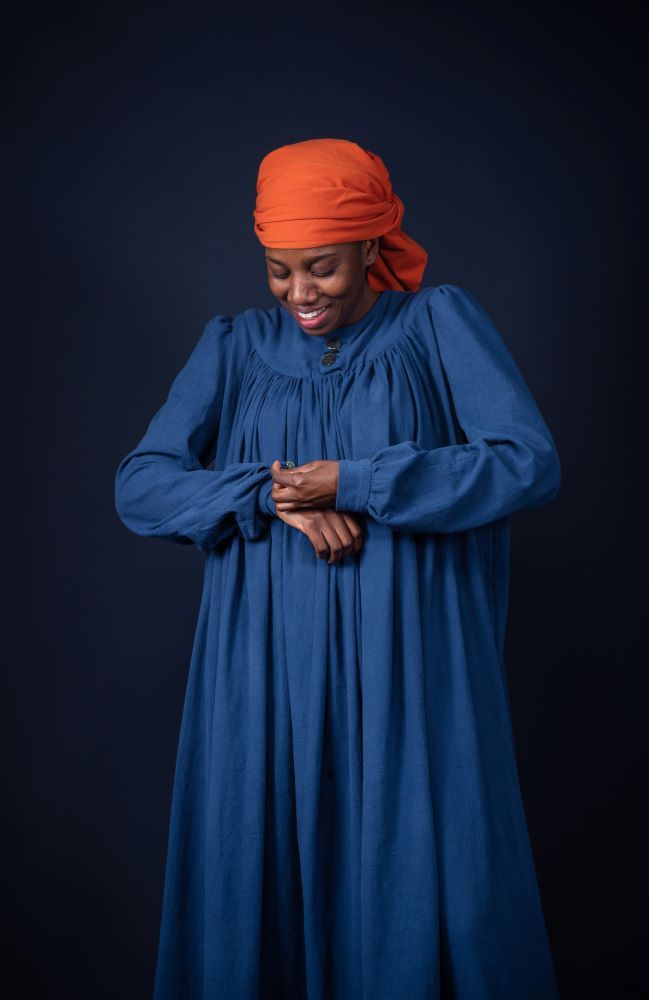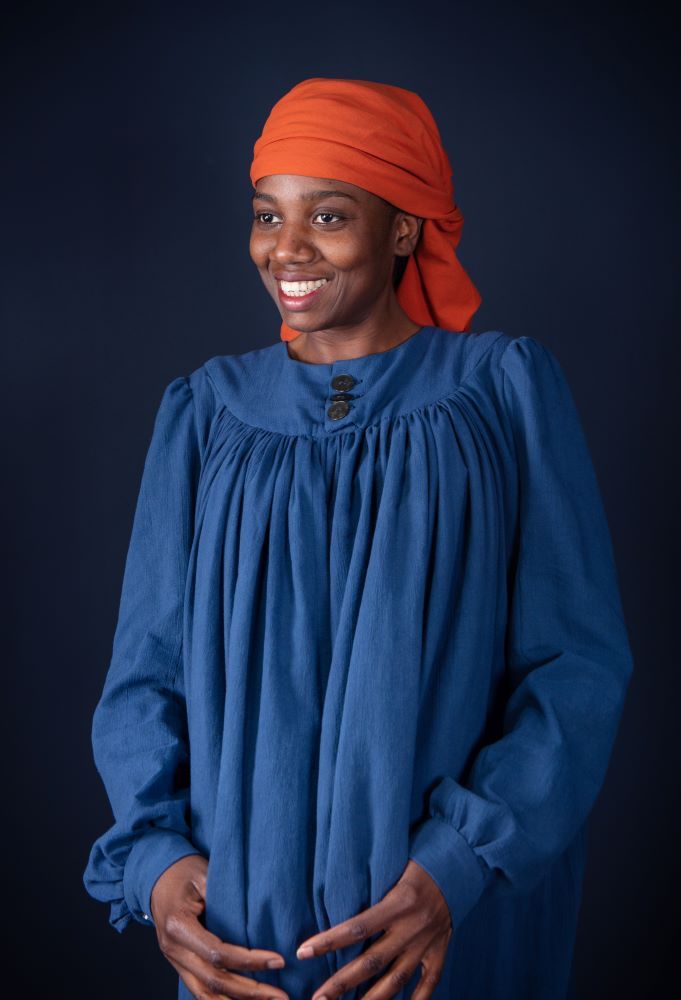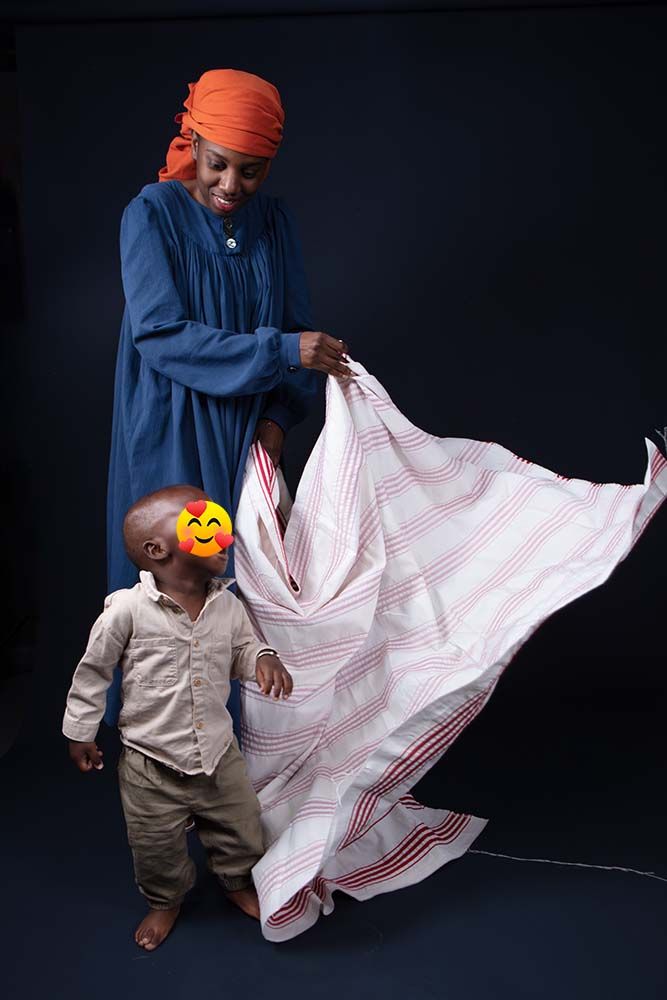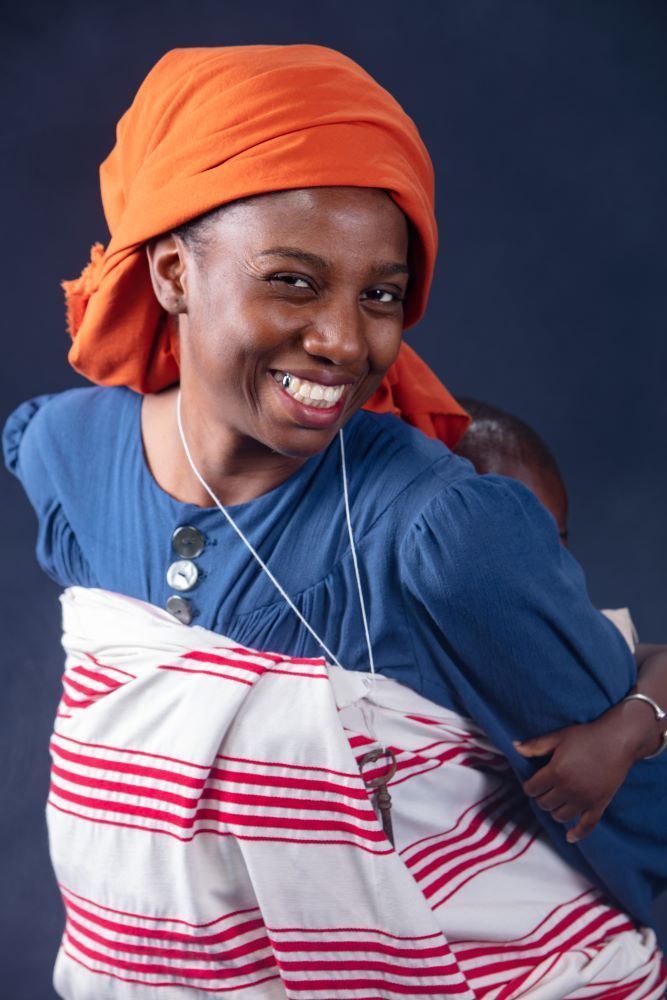Reconstruction of the Cafrine costume
Part 3: The result
The Cafrine & her baby
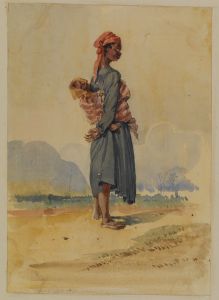
We are proud to present our latest historical reconstruction project, based on this watercolour of the Duke of Treviso, dating from 1861.
To make sure you don't miss out on any information, we've included :
- the article about the painter Hippolyte Charles Napoléon Mortier, the Duke of Trevise
Part 1 of this reconstruction, explaining watercolour painting and - Dominique VANDANJON-HERAULT's research into it in the article Reconstruction of the Cafrine - Part 1: At Le Tampon, A cafrine and her baby.
- the 2nd part concerning the making of the different elements in the article Reconstruction of the Cafrine - Part 2: Making the Cafrine's garment
The result
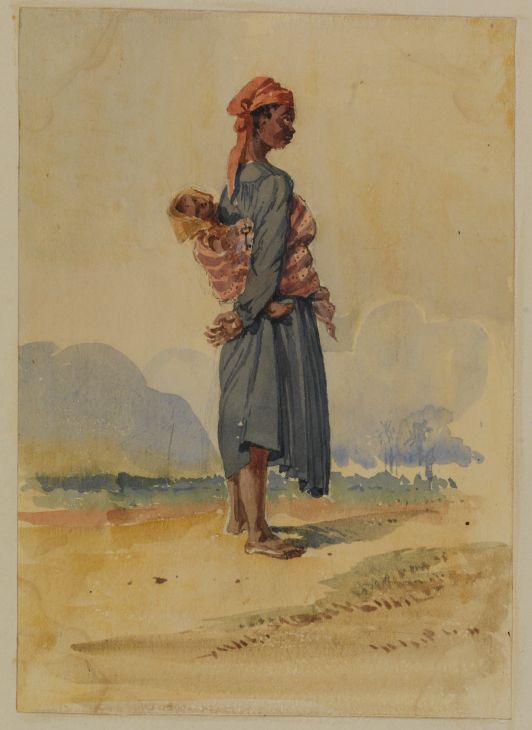
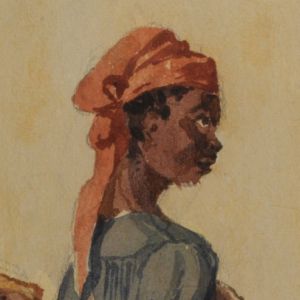
The head scarf
ochre orange in colour
The indigo blue dress
whose fabric was certainly donated by the landowner for whom she works

The baby carrier
A loincloth, striped in red with patterns that are difficult to see on the watercolour.
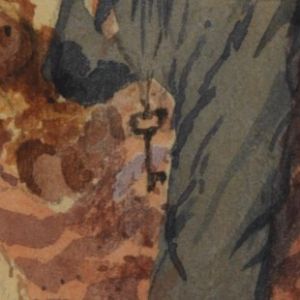
The key
Our hypothesis is that she has a key to the property where she works, a sign of trust on the part of her employer.
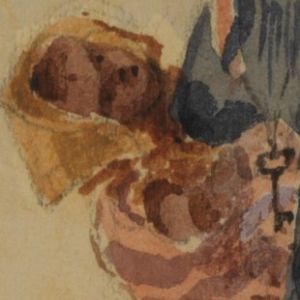
The baby
He seems to be playing with the key, nonchalantly dangling in front of him to keep him occupied.
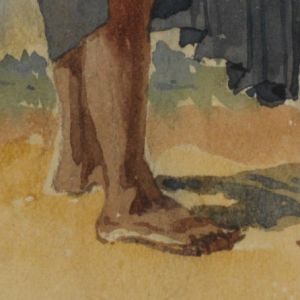
Being barefoot
Like most of the illustrations and photos from the period that we have assembled
Courtesy from Iconothèque Historique de l'Océan Indien
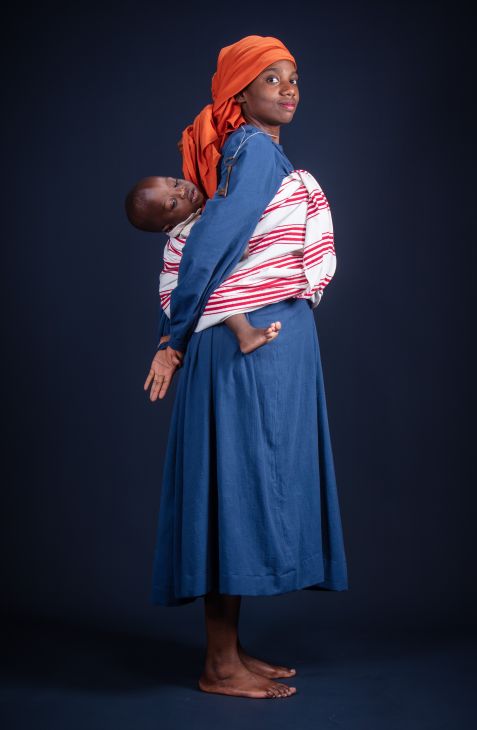

The head scarf
Simply tied around the head. Unfortunately the piece of fabric was too big, but Marame was able to cope with it easily.

The baby
Thanks to Marame for agreeing to let her son be an extra :) he's peacefully asleep, and maybe that's why the baby's head in the original watercolour is wobbling or even falling off...
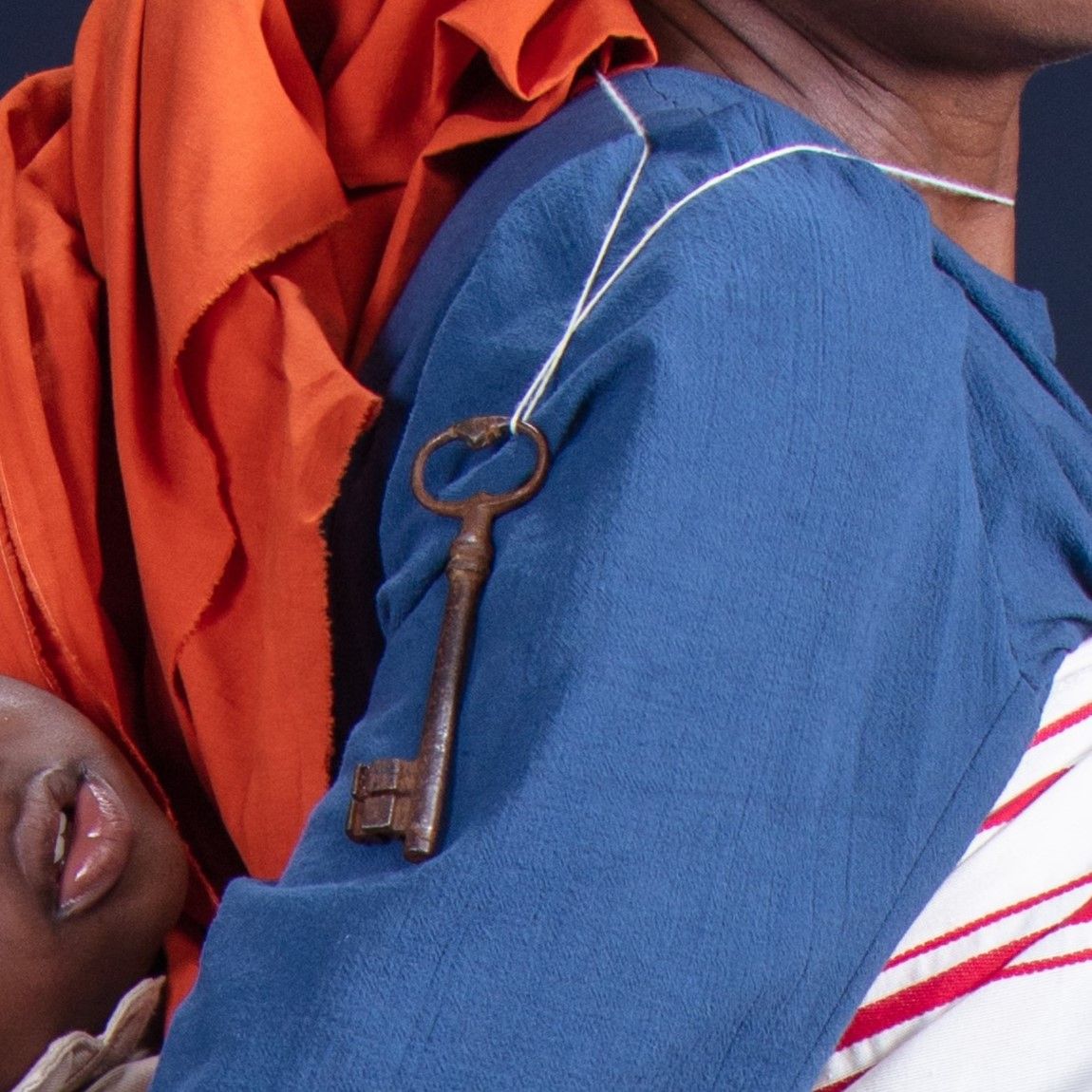
The key
A beautiful old-fashioned key found at a flea market, cleaned and stripped down to the bare essentials, attached to a simple rope around the neck.
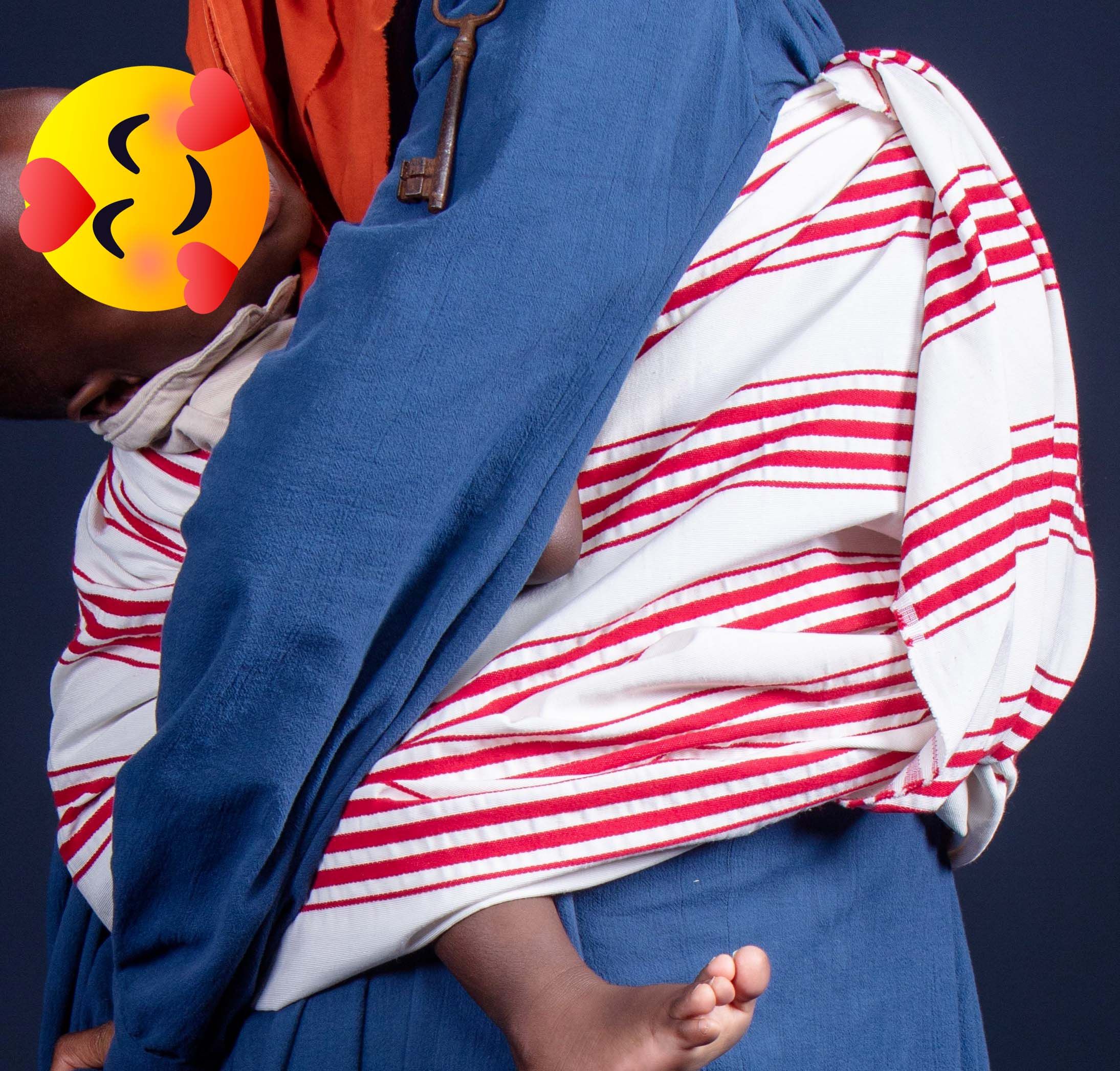
The baby carrier
A white fabric with red stripes, solid and non-stretchable, was the closest to what is shown in the watercolour.
The dress
Sewn in cotton chambray, pre-dyed blue.
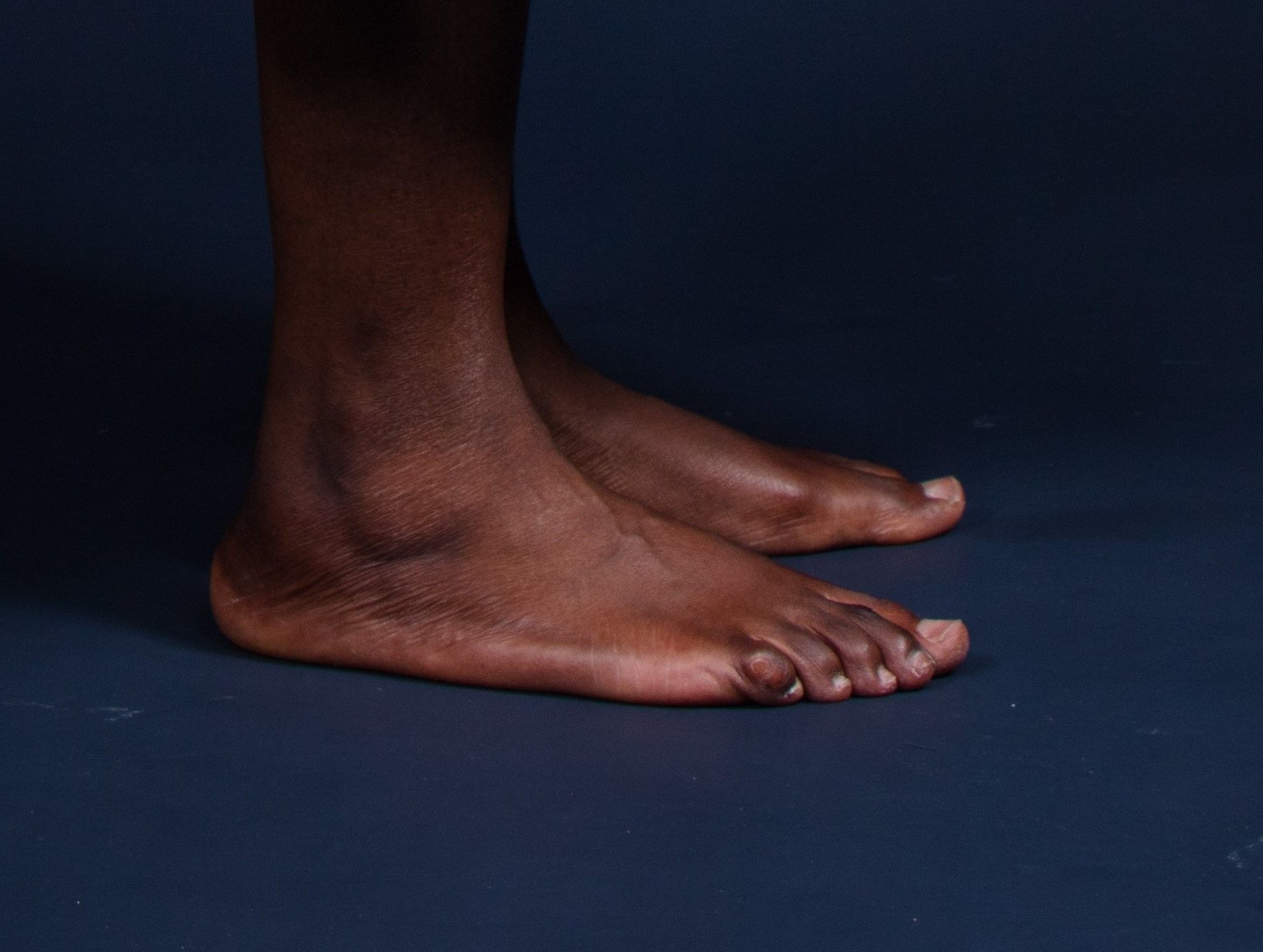
Being barefoot
Shooting in the studio offers a certain level of comfort for our models, although it does require them to be barefoot.
Credit Studio Non Peut-Être
A conversation with our model
It was interesting to be able to discuss this illustration with our model, Marame, who is originally from Senegal.
In her article Reconstruction of the Cafrine - Part 1: At Le Tampon, A cafrine and her baby, Dominique VANDANJON-HERAULT explains the links between Réunion and Senegal in the 19th century.
Although information about the dress was available online, I was puzzled by the knotting of the head scarf and the 'baby carrier'.
The head scarf
As I don't cover my head very much, I'm not at all familiar with the use of fabric as a head covering.
Marame recalled the existence of the "Tignon laws" forcing black and mixed-race women to cover their hair, in order to "attract less white men" while making them display their social status and their "difference" to white women (I remind you that these are 18th-century words, not mine).
As coquetry doesn't stop at such a law, the women targeted by this law have adapted to it and found myriad styles and uses for it (including hidden messages following the knot).
Although this law no longer exists, many black and mixed-race women continue to use a fabric to embellish their outfit or protect their hair. Wigs are also widely used, but the way they are used and worn differs from head scarves.
Marame explained that for the scarf to be so 'flat', our cafrine must have a shaved head, or very short hair, or a short hairstyle that presses her hair against her head.
In the end, the knot is quite simple, and easy to reproduce. Provided you have less fabric...
Even though the video is in French, the most interesting thing is the process, isn't it :) ?
These techniques do not resemble the one used by our cafrine. The image opposite, on the other hand, is a perfect match.
Apparently very simple to tie, this technique allows the mother great freedom of movement, without little hands getting in the way, or food falling on her head (...does he really realise that??).
So this is the technique I asked our model to use, because having already seen her use it, I knew she was totally familiar with it.
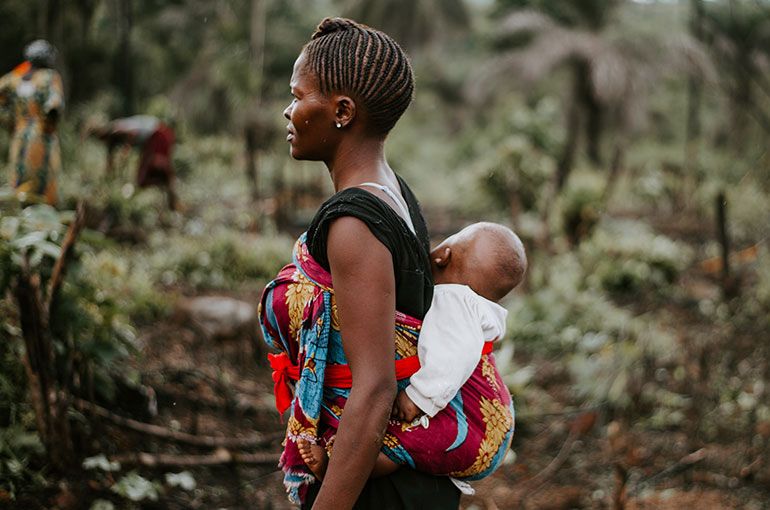
In no time at all, she had finished. If my son didn't move so much, I'd try...
According to Marame and other sources, the cafrine on the watercolour uses a loincloth. A rectangle of fabric that can wrap a body can also wrap a baby and hold it in place.
In the first photos of the baby carrier being tied, Marame can be seen wearing the "loincloth" around her hips.
But although the shape may appear simple, the baby carrier used is an object cherished by the mother, often given to her by her mother or by the local community. In fact, it will often be used and will be very useful during the first few years.
Here's a final anecdote from a good friend of mine in Mali. The eldest in his family, he says that despite everything (and despite his advanced age) he remembers when his mother carried him on her back, with great emotion. To remember such an impression at such a young age, I imagine it must have been particularly reassuring for him!
Thanks



Behind the scenes
It's always a great pleasure to welcome people who are ready to share the adventure with us, to bring to life these iconographic documents that are so important to Creole memory and culture.
Seeing your work come to life so easily, being worn and, above all, being comfortable for the model, is very gratifying.
This reconstruction and that of the Citizen (see Reconstruction of the Citizen's costume - Part 3: conclusion) are on display in the
- the Galerie Non Peut-Être -
and whose
- Art-o-theek -
(a system of renting works of art to private individuals and/or professionals)
will help fund our projects so that they can continue.
Come and see us (appointment required, except on the 1st Sunday of each month)







